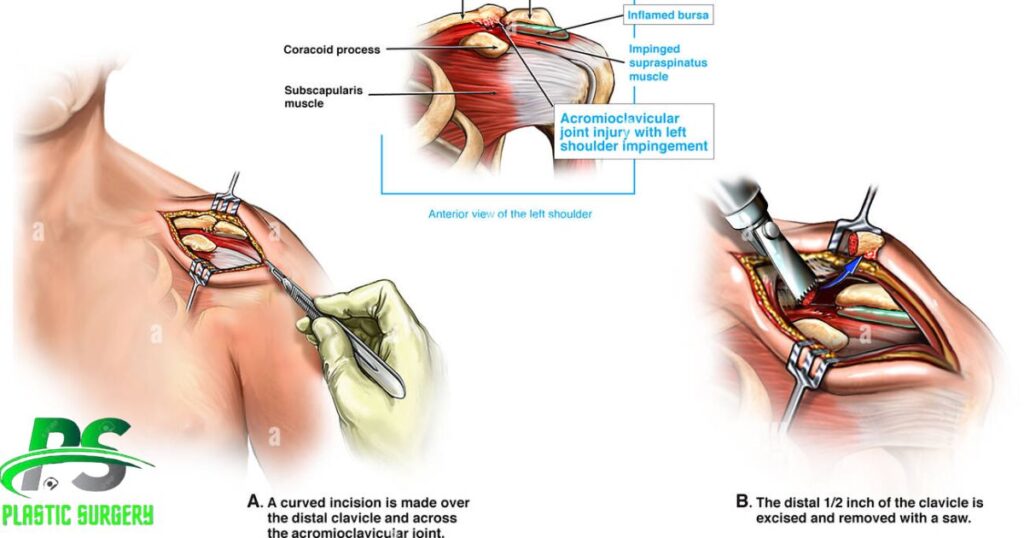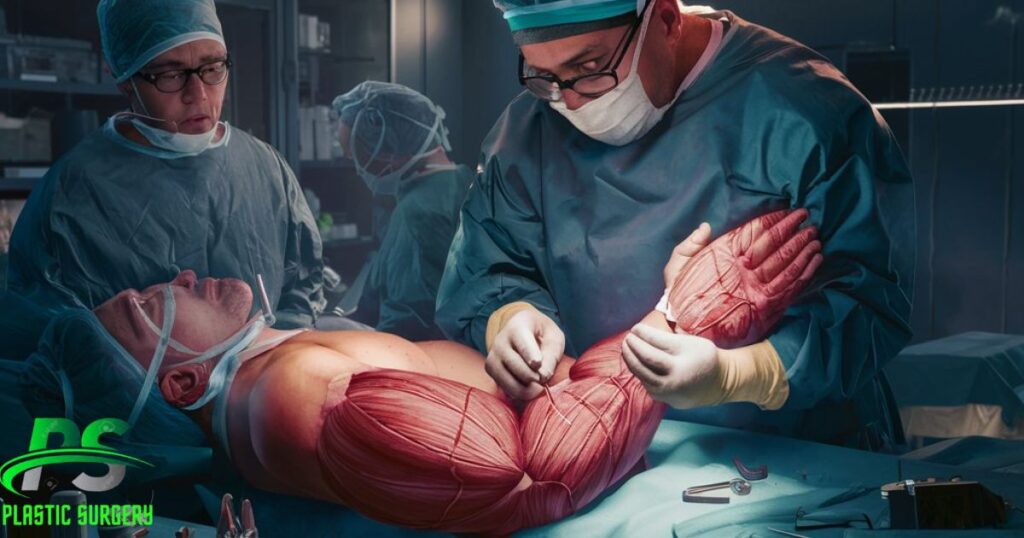Plastic surgery muscles refer to procedures aimed at altering or enhancing the appearance and function of muscles through surgical interventions. These surgeries can involve techniques like muscle augmentation reduction or reconstruction to achieve desired aesthetic or functional outcomes.
Ever wondered how some people achieve sculpted physiques? Enter the world of plastic surgery muscles. From enhancing muscle definition to correcting muscular deformities, these procedures offer transformative results. Explore the fascinating realm where science meets aesthetics, reshaping bodies and boosting confidence, one muscle at a time.
Plastic surgery for muscles involves procedures to enhance or alter muscle appearance. These surgeries can include muscle implants or reshaping techniques. They are often sought by athletes or individuals aiming to achieve specific aesthetic goals.
Is there surgery for muscles?

Yes, there are surgeries available for muscles. These surgeries aim to repair or improve muscle function, often after injury or due to certain medical conditions. Surgeons can perform procedures such as muscle repair, muscle transfer, or tendon transfers to address issues with muscle strength or movement.
Muscle surgeries can help individuals regain mobility, reduce pain, and improve their quality of life. These procedures are often part of a comprehensive treatment plan that may include physical therapy and medication. While surgery for muscles can be beneficial, it’s important to consult with medical professionals to determine the best course of action based on individual needs and circumstances.
What is muscle repair surgery?

Muscle repair surgery is a medical procedure performed to fix muscles that have been damaged due to injury or trauma. During the surgery, the damaged muscle tissue is carefully repaired by a surgeon using specialized techniques and tools. This helps restore the function and strength of the affected muscle, allowing the patient to regain mobility and reduce pain.
The recovery process after muscle repair surgery typically involves physical therapy and rehabilitation exercises to help strengthen the repaired muscle and improve range of motion. It is essential for patients to follow their doctor’s instructions carefully to ensure proper healing and prevent further injury. With proper care and rehabilitation, many patients can expect to regain full or near-full function of the repaired muscle over time.
What is surgery for muscle gain?
Surgery for muscle gain, also known as cosmetic muscle augmentation, is a medical procedure aimed at enhancing muscle definition and size in specific areas of the body. It’s often sought by individuals who struggle to achieve desired muscle growth through traditional means like exercise and diet alone.
During the surgery, a plastic surgeon inserts implants or injects fillers into targeted muscles to enhance their appearance.
The procedure is typically performed under general anesthesia and can involve various techniques depending on the desired outcome and the patient’s anatomy. While surgery for muscle gain can provide immediate results, it’s essential to understand the potential risks and complications associated with any surgical procedure, including infection, scarring, and dissatisfaction with the results.
Moreover, post-operative care and adherence to a healthy lifestyle are crucial for maintaining the outcomes of the surgery over time.
Can you get plastic surgery for muscles?

Plastic surgery for muscles isn’t quite like getting a typical nose job or breast augmentation. You can’t simply go under the knife and come out with bulging biceps or a six-pack. Muscles are primarily built through exercise and proper nutrition, not surgery.
However, there are procedures like muscle implants or fat transfer that can enhance muscle definition or size. These surgeries involve inserting implants or transferring fat to areas where muscles are desired, but they don’t replace the need for exercise.
Ultimately, while plastic surgery can help improve muscle appearance to some extent, it’s not a shortcut to a toned physique. It’s important to consult with a qualified plastic surgeon and understand the limitations and risks associated with any cosmetic procedure.
Muscle implant surgery cost

Muscle implant surgery can be expensive. The cost varies depending on many factors. These factors include the type of implants and the surgeon’s fees. Additionally, hospital fees and post-operative care contribute to the overall expense.
Patients should research costs thoroughly. Consulting with multiple surgeons helps in understanding pricing options. Moreover, considering insurance coverage or financing plans can ease financial burdens. Ultimately, understanding the costs involved ensures a well-informed decision about muscle implant surgery.
Muscle augmentation surgery

Muscle augmentation surgery is a medical procedure that enhances muscle size and definition. Surgeons use implants or fat transfer to achieve desired results. This surgery is popular among bodybuilders and athletes aiming to improve their physique.
The procedure involves risks like infection and implant rejection. Recovery time varies but typically includes rest and limited physical activity. Overall, muscle augmentation surgery can provide a boost in confidence and help individuals achieve their aesthetic goals.
Plastic Surgery Muscles
| Type of Surgery | Description |
| Muscle Augmentation | Enhances muscle size and definition using implants or fat transfer. |
| Muscle Contouring | Reshapes muscles to achieve a desired contour or symmetry. |
| Muscle Repair | Repairs damaged or torn muscles, often due to injury or trauma. |
| Muscle Reduction | Reduces muscle size, commonly performed for medical or cosmetic reasons. |
Frequently Asked Question
What is muscle augmentation surgery?
Muscle augmentation surgery enhances muscle size and shape using implants or fat transfer.
How long does it take to recover from muscle augmentation surgery?
Recovery time varies but typically involves several weeks of rest and limited physical activity.
Are there any risks associated with muscle augmentation surgery?
Yes, risks include infection, implant rejection, and complications related to anesthesia.
Can muscle augmentation surgery improve athletic performance?
While it may enhance appearance, its impact on athletic performance varies and should be discussed with a medical professional.
Who is a suitable candidate for muscle augmentation surgery?
Suitable candidates are typically healthy individuals seeking to enhance their muscle definition and have realistic expectations about the procedure’s outcomes.
Conclusion
Plastic surgery muscles refers to a variety of procedures aimed at enhancing the appearance or function of muscles in the body. These surgeries can involve techniques such as muscle augmentation, contouring, repair, or reduction. Muscle augmentation, for instance, utilizes implants or fat transfer to increase muscle size and definition, commonly sought after by bodybuilders or individuals looking to improve their physique.
Conversely, muscle reduction surgeries aim to decrease muscle size, often for medical or cosmetic reasons. These procedures can help alleviate conditions like hypertrophy or correct asymmetry in muscle development. Regardless of the specific type of plastic surgery muscles procedure, it’s crucial for individuals to thoroughly discuss their goals, expectations, and potential risks with a qualified surgeon before undergoing any treatment.










2 thoughts on “Plastic Surgery Muscles”